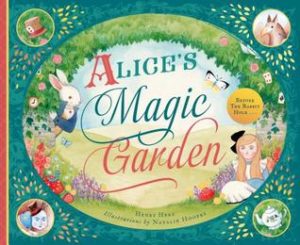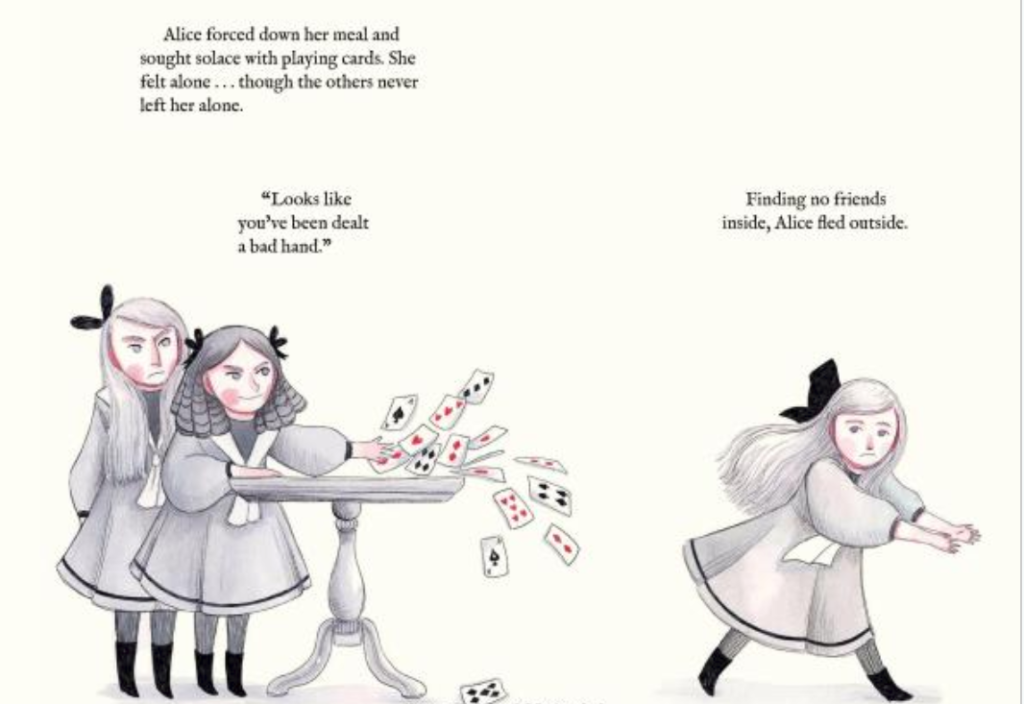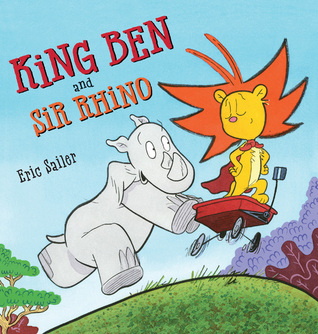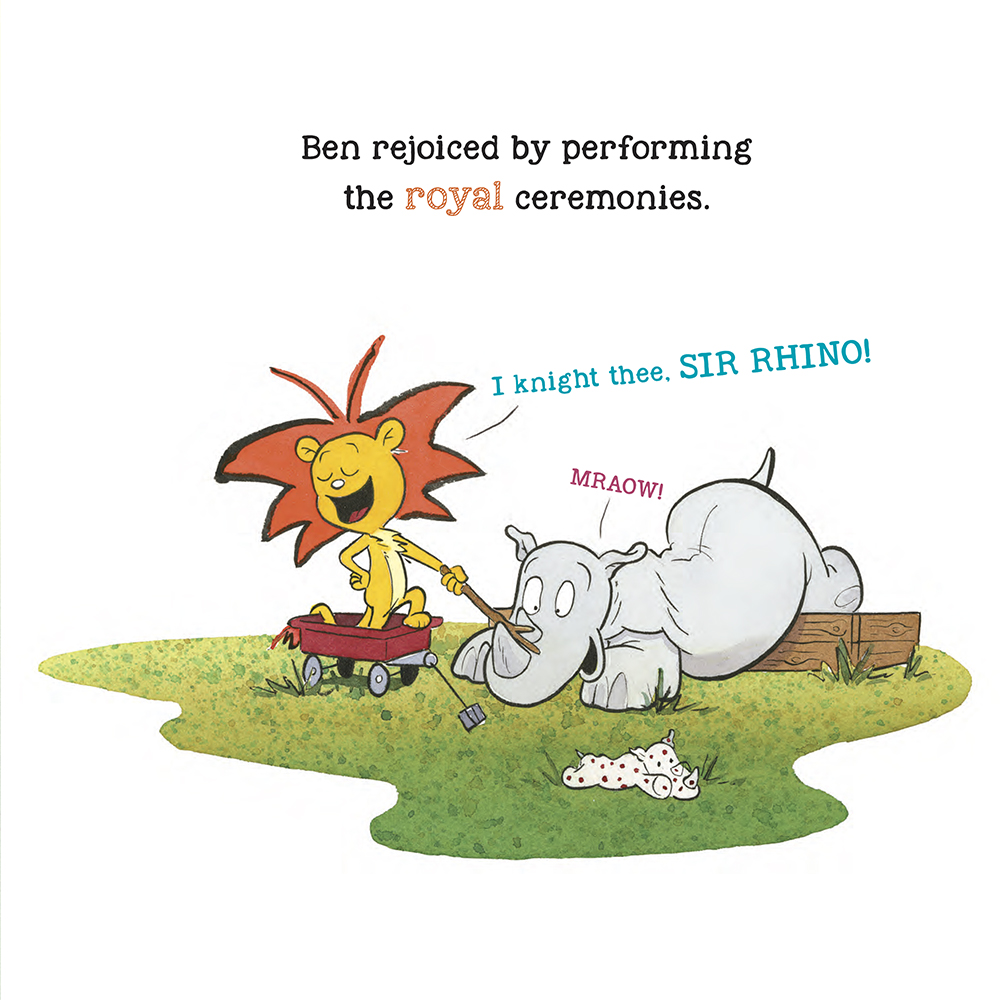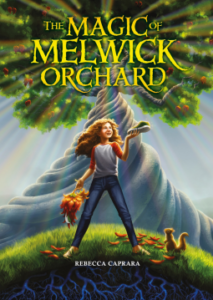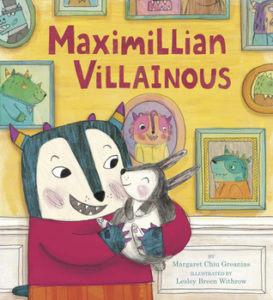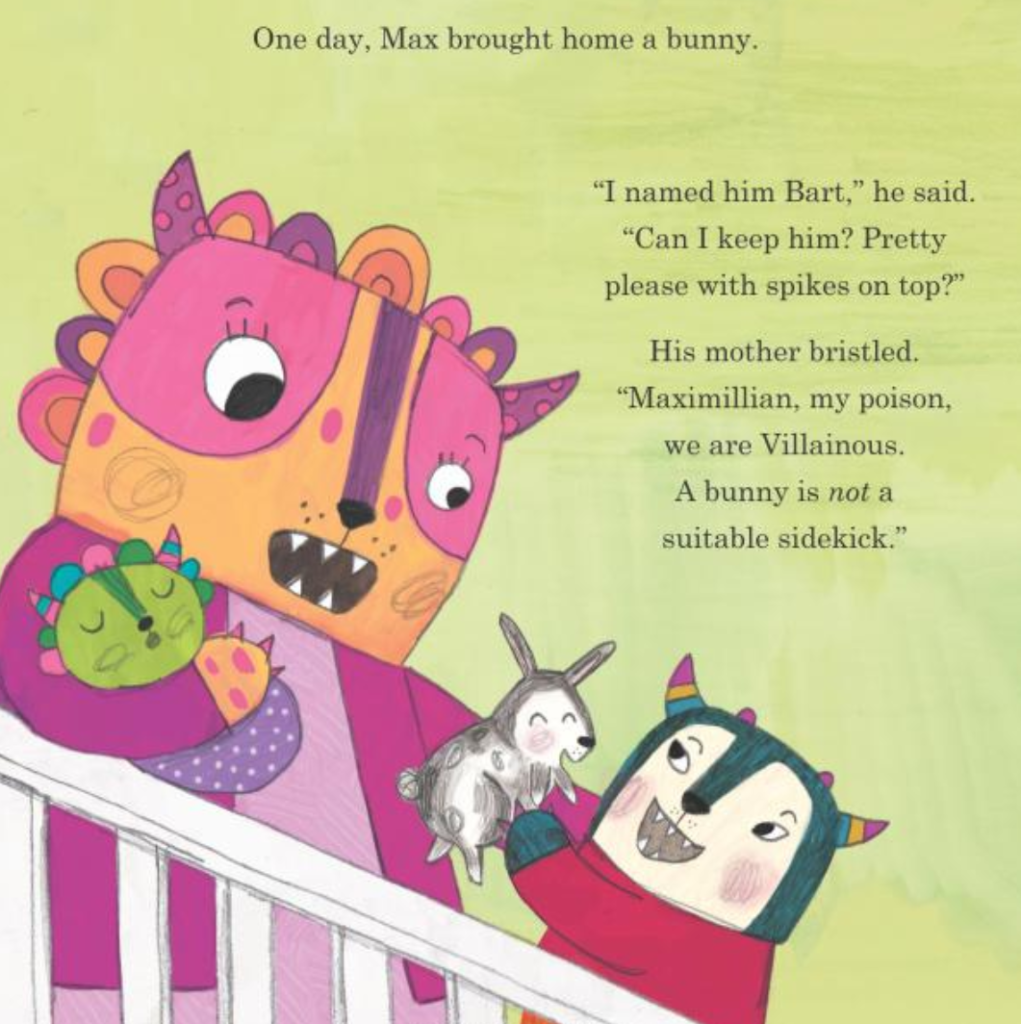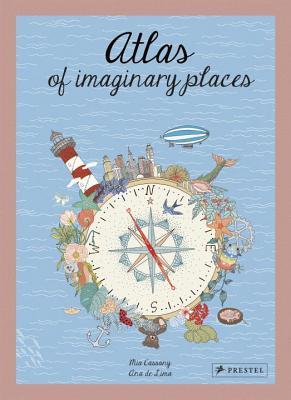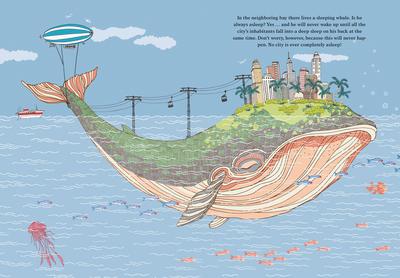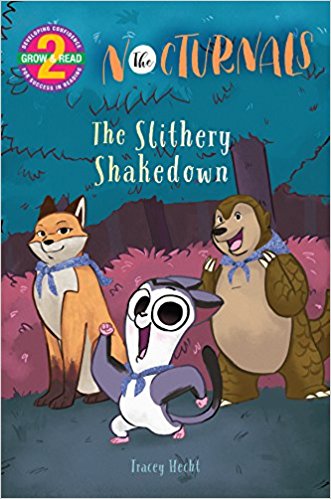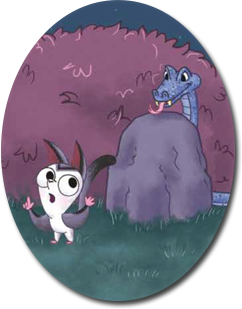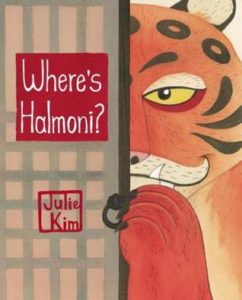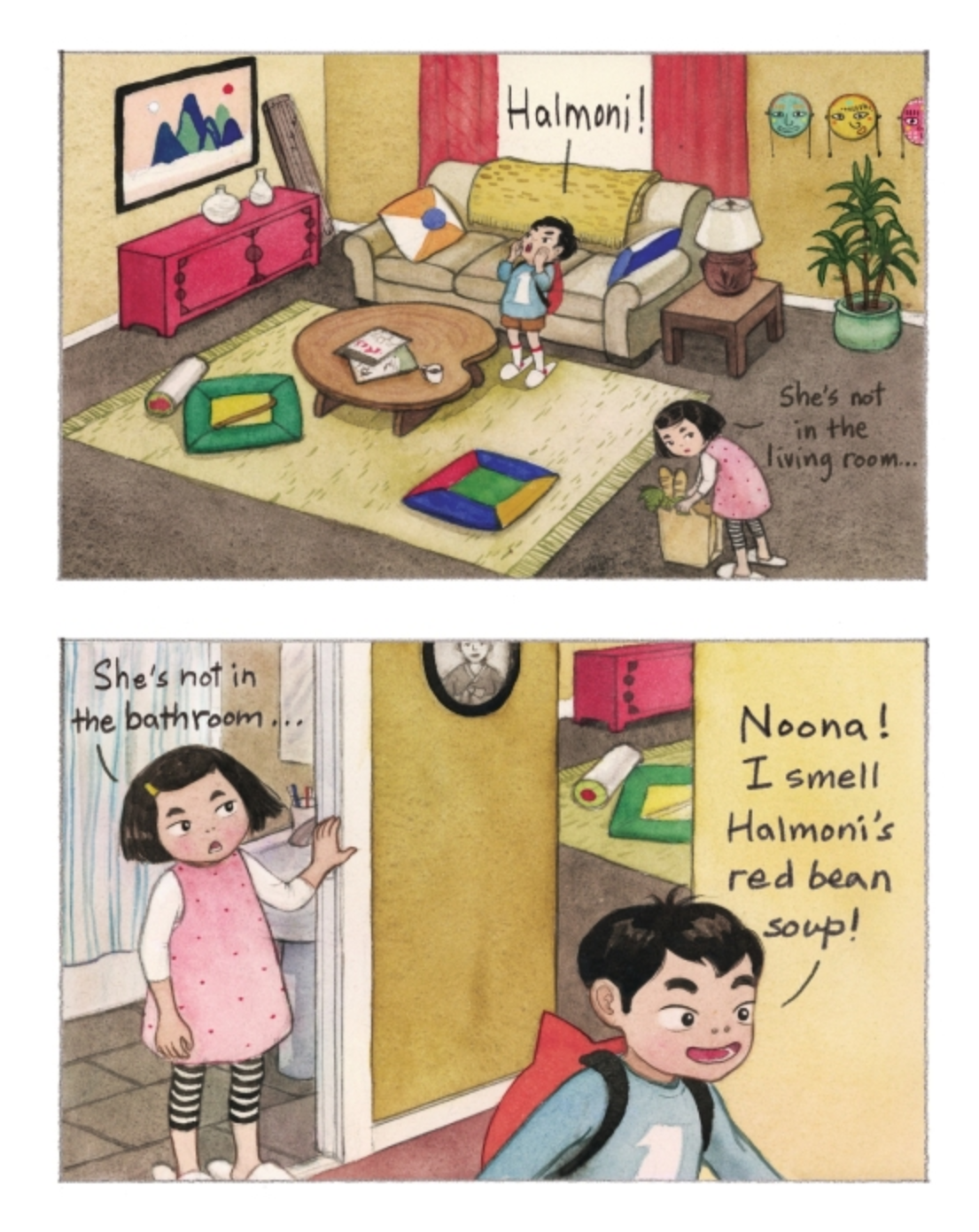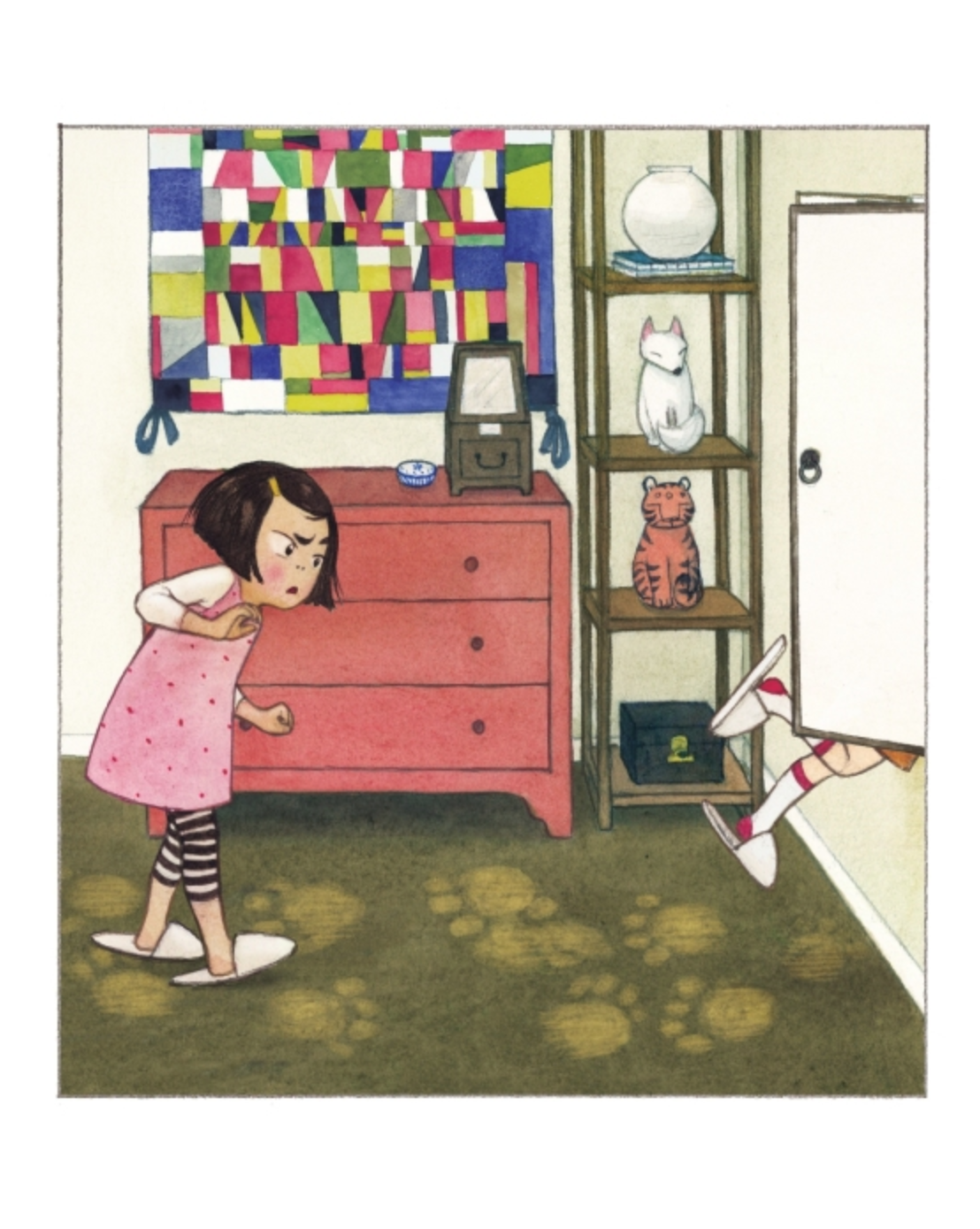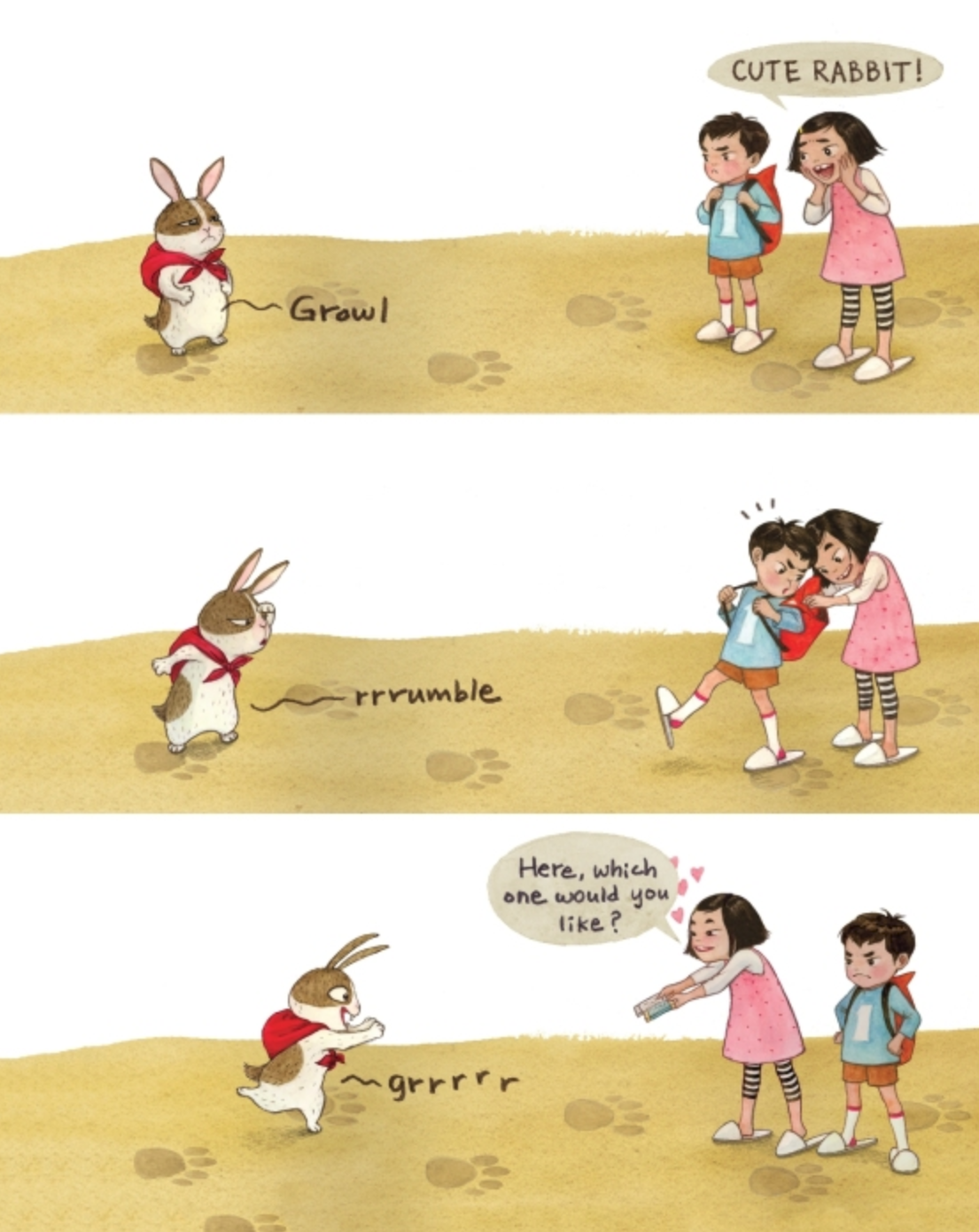Alice’s Magic Garden: Before the Rabbit Hole…
Author: Henry Herz
Illustrator: Natalie Hoopes
Published September 1st, 2018 by Familius
Summary: Curiouser and curiouser!
In this imaginative prequel to Alice’s Adventures in Wonderland, Alice finds herself at a gray, dreary boarding school that is decidedly up the rabbit hole. From the relentless clocks to the beastly students, Alice’s world is void of color and cheer–until Alice finds a secret garden and begins tending its wilting inhabitants. When Alice’s love touches an ordinary caterpillar, a lorry bird, and a white rabbit, magical things will happen–and that, as you know, is just the beginning of the story. Filled with literary allusions and clever nods to its classic roots, Alice’s Magic Garden is a delightful prequel that begs an escape to the whimsy of Wonderland.
Review: I love when I find a twist on a classic story that is new and fresh! Herz’s story about how Alice’s garden came to be is so unique and definitely different than I’d ever heard or read before. While it holds true to the magic and silliness of Carroll’s original, it also adds a nice lesson in the vein of kindness and happiness which will lead to some great discussions as well.
I’m also a huge fan of the illustrations. I loved how color was used to show the shift in Alice’s surroundings and the way the illustrator separated the real from the strange. Additionally, I truly loved the style of the artwork which, in my opinion, was a perfect style for the story: classic with a bit of whimsy.
Teachers’ Tools for Navigation: Use Alice’s Magic Garden as a mentor text for an imaginative prequel and ask students to create their own picture book as a prequel for a book they’ve read, a class novel, or a book club selection.
Also the story has some wonderful word choice that students can look at and discuss why the specific words were chosen.
Lastly, Alice’s could be used with secondary classes if the classic text is being read to look at allusions.
Discussion Questions:
- Why does the illustrator go from grayscale to color drawings?
- What allusions to the original story do you see in the picture book?
- How did kindness save the day?
- How is Alice different than the other girls in her boarding school?
Flagged Passages:
Read This If You Love: Alice’s Adventures in Wonderland by Lewis Carroll, Fractured fairy tales or other retellings, “Jabberwocky” and other poems by Lewis Carroll
Recommended For:
**Thank you to Familius for providing a copy for review!**
